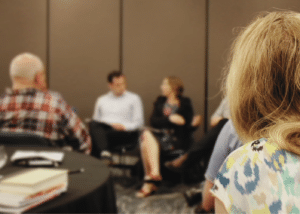What is a typical journey towards HOP?
Published by HOPLAB by Southpac International

One of the most common questions is, “Where can we find your HOP program?”
First and foremost, it’s difficult to answer because Human & Organisational Performance is not a program. (Sorry, there are no posters, either!)
But there are ways we can start to introduce HOP at both individual and organisational levels. Firstly, where to start can depend on how familiar the organisation is with HOP principles. Secondly, how strong is the appetite at the leadership level to move away from looking at safety through the lens of incident and injury rates? Conversely, focus on operational learning and strive to understand how the work really gets done.
Often, this desire may be evident on the surface. However, when it comes to the pointy end, convincing top management to shift away from a blame culture or accept a real gap exists between work as imagined and work as done can be an uphill battle.
While it is rarely linear, these are the phases an organisation will generally go through when adopting HOP.
1. Garnering interest and commitment
Firstly, Human and organisational Performance discovery is often linked to a senior leader or group of workers identifying the need to change and grow. During this phase, securing the decision-makers interest and developing a broad-reaching commitment to the HOP approach is critical.
HOPLAB’s extensive range of free resources is available to help foster interest throughout this phase. These recourses include a library of videos, articles, and downloadable guides.
Hearing how HOP happens from those who know can also be a decisive first step in securing the decision-maker’s support. Our HOP team can provide a 1-hour briefing, in person or virtually, to introduce HOP to key internal stakeholders, including senior leaders, executives or Board members.
2. Developing a foundational understanding of the HOP philosophy
For the best results to be achieved, there needs to be a deep understanding of what HOP is. This is in addition to understanding how the tools and terminology support the adoption of HOP across the organisation. This phase is where you’ll learn the language, concepts and principles that allow for transformational shifts in how work happens.
Therefore, Our HOP courses provide the training individuals and organisations need to build this foundational knowledge. Initially, the first adopters (generally HSE managers or safety leaders) may want to undertake training through our 1-Day Fundamentals or 3-Day HOP & Learning Teams Course. All of which are run regularly throughout the year.
Concepts including mistakes and errors, blame vs accountability, performance variability, complex coupling of conditions and the importance of response are introduced and applied to everyday work situations.
Participants in our public courses benefit from the diverse range of organisations and industries represented. Unquestionably, this allows for different ideas and perspectives to develop during discussions.
Following this, many leaders will see the value in organising in-house training for HOP and Learning Teams. This provides an opportunity to train a group from within a particular team, department, or operational area to scale up the organisational knowledge of HOP and bring more personnel up to speed. In addition, In-house training is also contextualised to the organisation, so the learnings, examples, and outputs are highly relevant to each participant.
3. Beginning Operational Learning
Beginning Operational Learning is an early, practical step for an organisation to implement HOP. There is no timeframe for becoming a learning organisation, and tangible results are challenging to measure – especially in the traditional safety sense. Operational Learning is the process of consciously collaborating with those who know the work to understand and improve the work.
There are a number of methods and tools that can be applied, including Learning Teams and Field Insights. When those pieces start to click into place, the real gems appear.
It can take a few interactions for operators to feel genuinely safe to share their real experiences without fear of consequence. And getting Operational Learning right doesn’t happen overnight; trial and error are part of the process. Further, One consistent finding is that if HOP principles are not firmly embedded in how an organisation approaches learning from how work is done – and how leaders respond – the outcomes of Operational Learning can be detrimental. For this reason, a pilot approach is recommended, as these variables can be tested under the guidance of experienced HOP facilitators.
4. HOP Integration & Alignment
The fourth phase of HOP focuses on integration. It ensures your management systems, policies, processes, and practices align with HOP. Importantly, It means an organisation-wide commitment to HOP – not just in principle, but in practice.
From our experience, we know many organisations are doing HOP and benefiting from greater engagement and better performance from their workforce. However, only some have achieved proper integration of HOP across their operations more broadly.
HOP Integration is supported through leadership mentoring, ongoing training, and personnel upskilling. We’ve been developing several tools and resources to help organisations navigate HOP Integration, including a HOP Maturity Model (the HOP|POD).
However, this phase is an ongoing process. It’s not ‘once done, always fixed’. Operational Learning continues to play a critical role as HOP Integration matures.
Phases adapted from Andrea Baker (2019) ‘An Introduction to the 5 Phases of HOP Integration’

Subscribe to the HOP|LAB® Newsletter
Get the latest information and insights on Human and Organisational Performance delivered to your inbox.





